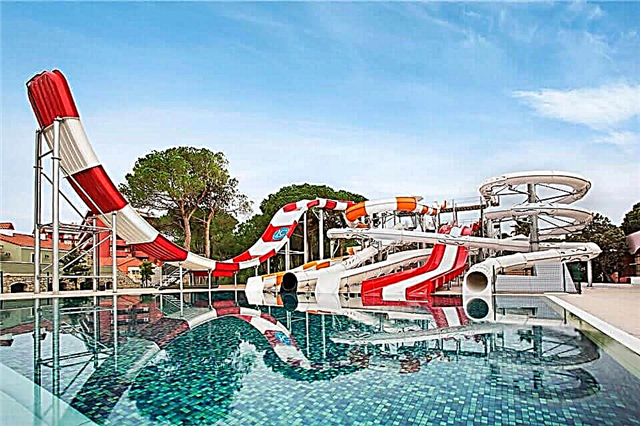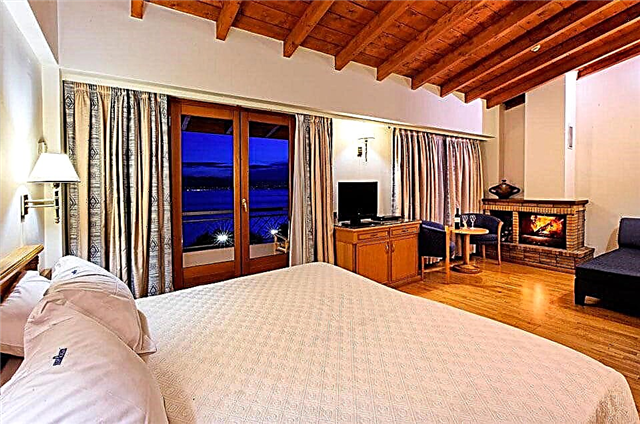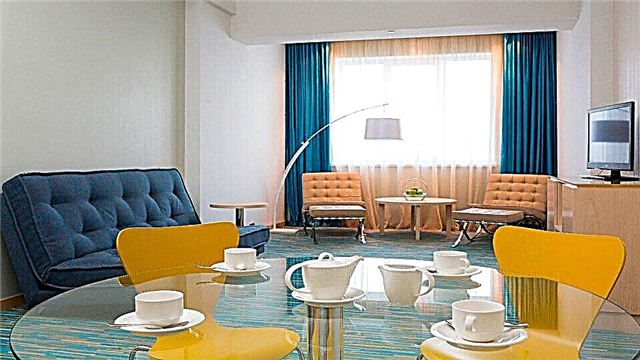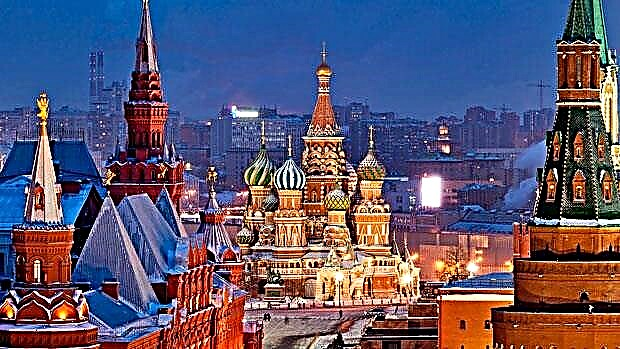Address: Russia, St. Petersburg, Griboyedov canal embankment, 2
Building: 1883 - 1907
Architect: Alfred Alexandrovich Parland
Coordinates: 59 ° 56'24.1 "N 30 ° 19'43.9" E
Cultural heritage site of the Russian Federation
Content:
One of the remarkable monuments of Russian architecture is located next to the green Mikhailovsky Garden, near the Griboyedov Canal. An unusual temple-museum appeared at the end of the 19th century at the behest of the Russian Tsar Alexander III. Many tourists come to the St. Petersburg Cathedral. They are attracted by the multicolored decor of the facades and the beautiful mosaics that adorn the interiors of the temple.

General view of the Church of the Savior on Spilled Blood
Regicide
The assassination attempt on the emperor took place on March 1, 1881. In the afternoon, the royal cortege passed from the Mikhailovsky Palace along the embankment of the Catherine Canal. The People's Party member Nikolai Rysakov threw a bomb at the horses' feet, there was a strong explosion, but the tsar was not injured.
When he got out of the carriage and approached the wounded Cossack, another striker, Ignatius Grinevitsky, threw another bomb. The second explosion mortally wounded the emperor. The Tsar died on the same day in the apartments of the Winter Palace. Two weeks later, the body of the tsar was buried in the Peter and Paul Cathedral.

View of the Church of the Savior on Spilled Blood from the embankment of the Griboyedov Canal
Construction history
The day after the tragedy, the City Council decided to install a temporary chapel on the bank of the canal. A small memorial church was built according to the project prepared by the architect Leonty Nikolaevich Benois. The new chapel was consecrated and stood for about two years. Donations for the monument to the deceased emperor came to the capital from different provinces of the Russian Empire. But it was decided that the best memory of the Tsar-Liberator would not be a sculpture, but a new cathedral. According to the plan of the organizers, it was supposed to differ from the classical, baroque and Empire temples typical of the northern capital.
A special commission held a competition for architectural projects, and it was won by Professor of the Academy of Arts Alfred Aleksandrovich Parland. The talented architect had Scottish roots - Parland's ancestors arrived in Russia at the end of the 18th century.

Fragment of the southern facade of the Church of the Savior on Spilled Blood
The architect proposed a project of the cathedral in the old Russian style, which incorporated the best traditions of pre-Petrine temple architecture. The new church cost almost a quarter of a century - from 1881 to 1907. To prevent water from the canal from flooding the foundation, it was reinforced with piles and a massive concrete base. A wide ledge was erected specially under the bell tower, and electricity was brought inside. At the beginning of the last century, this was an innovation and caused surprise among ordinary people. The vaults of the temple were illuminated by more than 1.5 thousand bright bulbs.
The cathedral was supported by the state treasury, but it was not open to the general public and was not a parish church. On memorable days, memorial services for the elect were held inside the church. Beautiful interiors and mosaics could be seen only by members of the royal family, close to the court and guests of the sovereign.

The fate of the cathedral in the 20th century
With the coming of the new government in 1917, the money for the church was no longer received. 11 years later, when an active anti-religious campaign was going on in the country, it was decided to dismantle the unique architectural monument. However, the Great Patriotic War prevented the implementation of the plan.
German troops approached the city, demolition work was postponed. When the blockade began, the cathedral began to be used as a morgue, and residents of Leningrad who died of hunger and disease were brought here, and in the post-war years the Maly Opera House kept its decorations and props in the cathedral building.
The temple received the status of a monument in 1968. To open the cathedral to the public, it had to be carefully restored. The building was surrounded by scaffolding for a long time.

Cathedral domes view
During the work, the builders discovered an unexploded German aerial bomb, which was stuck in the vault. I had to call the sappers to save people from mortal danger. Residents of the city and tourists were able to see the magnificent cathedral 90 years after its consecration - in 1997.
Architectural features
The Savior on Spilled Blood stands out among the cathedrals and churches of St. Petersburg. The high three-apse temple is the architectural dominant of the historical part of the city. It rises 81 meters above the embankment. This number means the year of the death of the king.
St. Petersburg Church is somewhat similar to the famous Intercession Cathedral, which adorns Red Square in Moscow. Despite the fact that the cathedral is dedicated to a tragic event, it looks very festive, striking everyone with its brightness and variegated decoration. There are many rainy days in St. Petersburg, but even in bad weather the original church looks elegant and solemn.

View of the Church of the Savior on Spilled Blood from the Mikhailovsky Garden
The building is elongated from east to west perpendicular to the canal line and has an asymmetrical shape. The quadrangle is adjoined by three apses, over which gilded domes rise. A high two-tiered bell tower flaunts from the west. The entire building is decorated with brick ornamentation, for which Russian churches of the 17th century are famous.
The massive base is faced with Serdobol granite, and in the niches there are 25 dark red granite boards, on which the main reforms of Tsar Alexander II are written. These are the transformations in the state structure, which the emperor carried out from 1855 to 1881.
On the facades, there are multi-colored mosaic compositions - a crucifix, belts, platbands and kokoshniks of 400 sq. m. One of the main decorations is the coats of arms of Russian provinces, counties and cities laid out in mosaics. They look very impressive and draw attention to the exterior decoration. The tall octagonal tent is surrounded by four onion domes covered with colored tiles, copper and smalt.

Interior decoration
The spacious single-altar church can accommodate 1,600 people. It houses the largest collection of mosaics in our country. Icons and mosaic ornaments occupy 7 thousand square meters. m and cover all walls, domes, pylons and vaults of the building. Here you can see the mosaic collection of Russian heraldry, colored tiles and beautiful semi-precious and semi-precious stones brought from the Urals and Italy.
The mosaics depict 277 saints, Christian symbols and more than 60 stories on the themes of the Bible and the Gospel. Sketches for them were drawn by famous Russian artists M.V. Nesterov, A.P. Ryabushkin, N.A. Bruni, V. Belyaev and N.N. Kharlamov.
The marble iconostasis is decorated with mosaic images of the Savior and the Mother of God with the Child, laid out according to the sketches of the artist Viktor Mikhailovich Vasnetsov. Unusual smalt icons do not fit into the church canons, but leave an indelible impression on everyone who comes to the cathedral. It is noteworthy that the restoration of these masterpieces took longer than it took to build the temple itself.

Tourists like to look at the faces of the Mother of God and Christ, which are depicted on the plafonds. True, they are so high that many take magnifying devices with them. The patterns on the stone floor, made of multi-colored ornamental stone, are very beautiful.
There is a special shrine in the church - a fragment of the pavement where the attempt on the sovereign took place. A graceful carved canopy hangs over the memorial site, which is supported by slender columns of gray-purple Altai jasper. At the top it is decorated with a cross made of transparent rock crystal, and on the inside it is lined with stars made of topaz. Here, under thick glass, memorial relics are kept - old cobblestones and forged gratings from the canal embankment.

Cathedral vaults
Useful information for tourists
Today the temple is part of the Isaac's Cathedral museum complex. It is open any day except Wednesday from 10:30 am to 6:00 pm. From late April to late September, evening tours of the cathedral are held from 18:00 to 22:30.
Children under 7 years old are admitted free of charge.Tickets for adults cost 350 rubles. For children from 7 to 18 years old, students and pensioners - 100 rubles. Thematic excursions about mosaics and the exterior of the cathedral are carried out for 400 rubles. Visitors can pay 200 rubles and use the audio guide in Russian, English and other languages.
The cathedral's throne was consecrated in honor of the Resurrection of Christ. Since 2004, on Sundays and on holidays, church services have been held in the church, and many believers gather at them. In order not to find yourself in a dense crowd of tourists and be able to admire the mosaics without haste, it is better to come to the opening.

The interior of the Church of the Savior on Spilled Blood
How to get there
The cathedral is located in the central part of the city, and it is easy to reach it on foot from the metro station "Nevsky Prospect". Exit to the Griboyedov Canal and walk 500 m to the temple.











